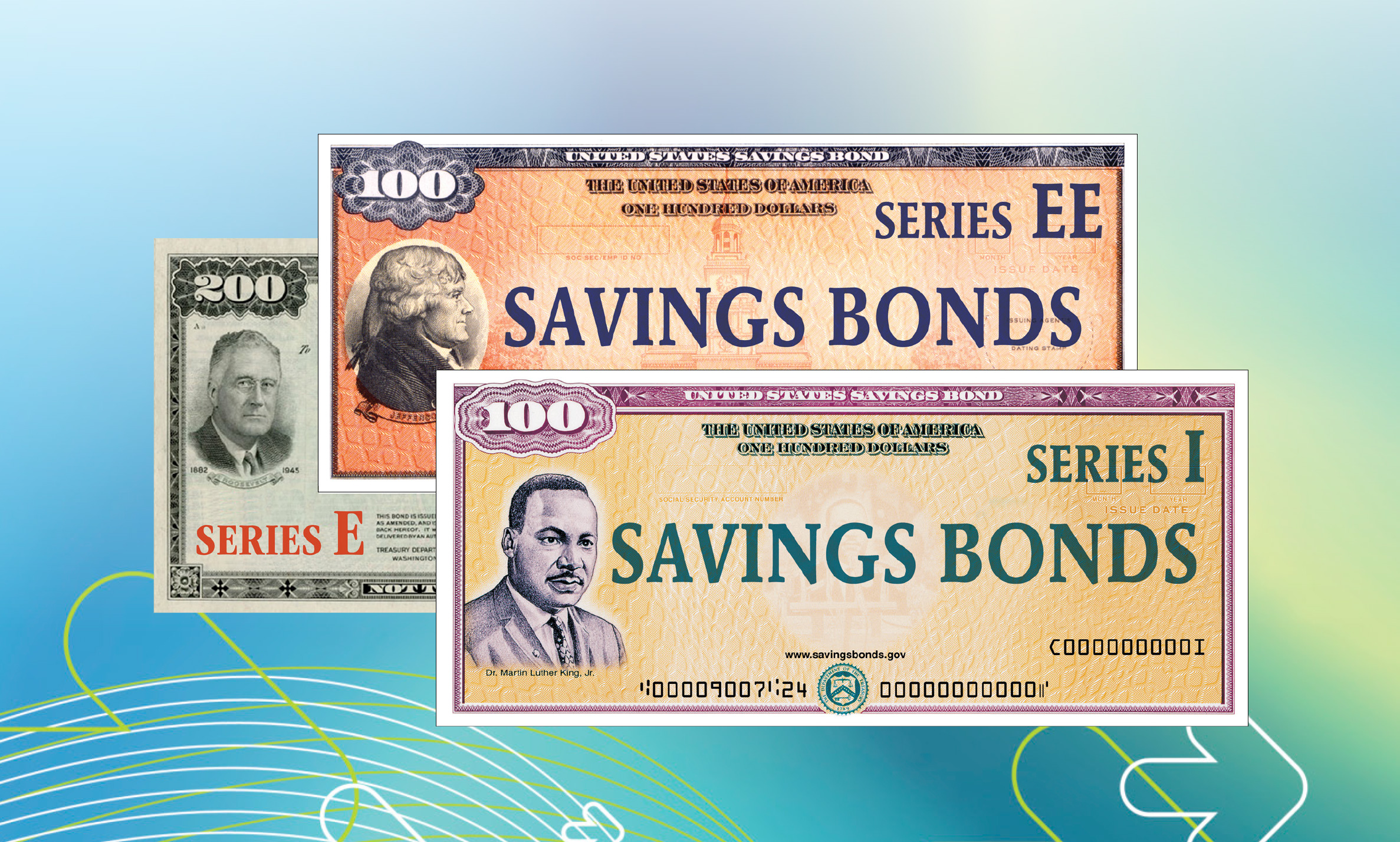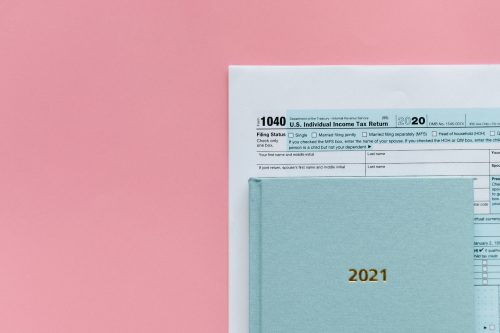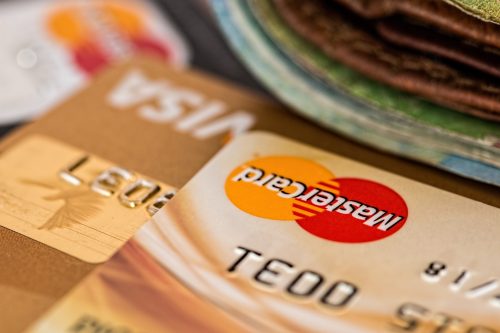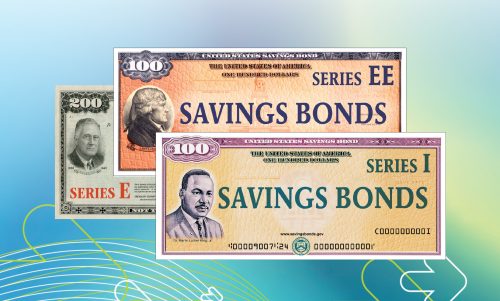- U.S. government savings bonds offer low-risk, long-term appreciation.
- Electronic savings bonds are available in a variety of denominations.
- Savings bonds are easy to use for gifts and can be held by minors.
A savings bond is a low-risk investment that matures up to 30 years and is backed by the U.S. government’s “full faith and credit.” A higher-interest alternative to savings accounts, savings bonds are subject to fewer taxes and can be used as gifts, even to minors.
Familiarizing yourself with the savings bond definition before purchasing one is useful to do: how they work, picking the right type and buying and selling them all require a bit of know-how before you get started.
What is a savings bond?
What are savings bonds? They’re long-term investments backed by the U.S. Treasury. With U.S. savings bonds, you help pay for the federal government’s spending needs in exchange for interest on the money you’ve essentially lent to the government. The face value of a savings bond reflects the amount of money the bond will have upon maturity. Bond buyers pay some percentage of the face value, which depends on the bond series and other factors.
President Franklin D. Roosevelt oversaw the implementation of the Treasury’s first-ever savings bond program. U.S. savings bonds were designed to spur people to save during the Great Depression, and the first bonds (Series A) offered a $25 face value. These bonds were considered safe long-term investments, backed by the financial power of the U.S. government.
Congress established the Education Savings Bond program in 1990 to encourage Americans to save for higher education. Bonds purchased on January 1, 1990 or later are tax-free, depending on income limitations, when used to pay tuition or fees at eligible institutions. This made bonds a popular gift for children; bonds’ long maturity periods meant most would mature by the time a recipient was ready for their post-secondary education.
How do savings bonds work?
Savings bonds are essentially contracts between the owner and the U.S. Treasury. Purchasers pay a percentage of the bond’s face value in exchange for interest payments on top of their principal. Some features and limitations of savings bonds may influence your investment decisions, so gaining an understanding of all aspects of a savings bond is paramount to your decision-making process.
Interest rates and maturation
Bonds earn either a fixed interest rate or a combination fixed and variable interest rate depending on the bond type and when it was issued. The Treasury may increase interest to keep up with the inflation rate as well. Investors recoup the full amount of their bond, plus interest, upon its maturity.
The life of the bond depends on which series it belongs to. The most recent bonds, Series EE, reach final maturity 30 years after they’re issued. These bonds will double in value over the course of 20 years.
Taxes owed
Savings bonds offer several income tax benefits. You’ll have to pay federal income tax on the interest earned, but do not have to pay state or local income taxes. You do not have to pay tax on Education Savings Bonds so long as you use the funds for qualifying expenses at recognized institutions. Taxes on savings bonds are due when you redeem your bonds, although you can also pay taxes yearly on the interest accrued instead of at redemption.
Purchase limit
There are limits on how many bonds you can purchase per Social Security number every calendar year. You can buy up to $10,000 in both Series EE and Series I electronic savings bonds. You can also purchase up to $5,000 in paper Series I savings bonds. Bear in mind that you can only purchase Series I paper bonds with your IRS tax refund.
Electronic bonds come in an array of denominations, beginning with $25. You can add in one-cent increments from there. Paper bonds come in five denominations: $50, $100, $200, $500 and $1,000.
Early redemption penalty
If you withdraw from your Series I bond before its maturity date, you will be subject to penalties. You can, however, cash your bond penalty-free within the first 12 months. If you redeem your bond within the first five years, you will forfeit the last three months of interest.
Nonmarketable
Unlike with other securities, savings bonds cannot be sold or traded to another investor. You have to deal directly with the Treasury Department for these transactions. Not being able to sell or buy bonds with third parties helps maintain stable ownership of the money represented by the bond. In other words, an independent market for U.S. savings bonds could undermine their inherent value, causing confusion and adverse outcomes for investors.
Types of savings bonds
Two types of savings bonds are currently available: Series I and Series EE bonds. Each have their own unique characteristics:
- Series EE savings bonds: Offer a fixed interest rate and are guaranteed to double in value in 20 years
- Series I savings bonds: Offer a variable interest rate tied to inflation rates during the life of the bond
How to buy savings bonds
Savings bonds used to only be available in paper form but are now predominantly sold electronically via TreasuryDirect.gov. You can set up a TreasuryDirect account to purchase savings bonds online in just a few simple steps. You’ll need your Social Security number or taxpayer identification number on hand, as well as other forms of personal identification.
Series EE bonds are only available electronically, however. Paper bonds are sold at half their face value, while TreasuryDirect bonds are sold at face value. Electronic bonds give you more flexibility in terms of the bond total since they can range from $25 to $10,000 in one-cent increments. Paper bonds offer fewer denominational choices and can only be purchased with your tax return proceeds.
How to cash in savings bonds
Before you cash in a savings bond, you’ll want to ensure that the bond has reached maturity. TreasuryDirect offers a tool that can help you confirm when a bond is ready to be cashed in. Paper bonds can be cashed in at a bank, credit union or other financial institutions. You can also convert Series I paper bonds to electronic bonds via TreasuryDirect, where you will also cash in electronic Series EE bonds.
Benefits and drawbacks of investing in savings bonds
Bonds offer a low-risk way of saving for the long term. They usually offer more competitive interest rates than a savings account, money market account or certificate of deposit. You may also owe less in income tax with a savings bond than these other low-risk savings options. Plus, savings bonds can be used as gifts and held by minors, unlike other securities.
There are downsides to savings bonds, however. You’re locked into keeping your money in the bond if you do not want to incur an interest penalty, which makes this a less liquid savings option. You may also generate greater returns through other investments, but this depends on market conditions and other factors.
Frequently asked questions
How much are my savings bonds worth?
You can check the value of your savings bonds over time using the TreasuryDirect.gov website.
Where is the serial number on a savings bond?
You can find the savings bond serial number in the lower right corner of a paper bond. Your electronic savings bond’s serial number is associated with its TreasuryDirect record.
How do I buy a savings bond as a gift?
You can buy a savings bond as a gift by obtaining the recipient’s personal information and then setting up accounts for both parties on TreasuryDirect.gov.










